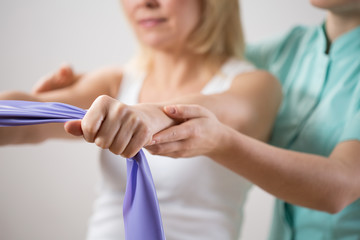Rehabilitation Following a Stroke
by Mariah Devries, DPT
Kids Place West Physical Therapist
A stroke is defined as a period in time where the brain does not receive sufficient oxygenation, resulting in death of brain cells. A stroke may produce resulting impairments including changes in strength, weakness on one side of the body, altered sensation, decreased mobility, and decreased functional independence. It used to be thought that following a stroke, your immediate presentation was “as good as it was going to get.” However, recent research shows that this is far from the truth for adults and children alike, with promising evidence that stroke survivors have a positive prognosis for recovery of motor function, sensation, and overall ability to actively participate in daily activities.
When working to rewire the brain and promote optimal recovery following a stroke, there are three primary factors to keep in mind:
Repetitive practice
How much practice does it really take to relearn a lost skill following a stroke? Research suggests that it takes approximately 1,200 repetitions per week of a particular activity to drive change. For example, if you are relearning how to walk following a stroke, daily, repetitive practice will be one of the most important factors to help you meet this goal. A physical therapist can help guide you to perform high quantities of repetitions during therapy sessions. However, your therapist can only spend a limited amount of time with you throughout the week. Make sure that in your free time you continue to perform high levels of repetitions of the activities you’re working to return to, as instructed by a physical therapist.
Challenging
The brain responds well to challenging activities, resulting in an increase in neuronal activity in the brain. For example, say that you are trying to relearn how to walk down a flight of stairs. Your therapist may recommend that you start with a simple progression with use of the hand rail, placing both feet on each step. As this becomes easier, place 1 foot on each step while holding on to the hand rail. As this becomes too easy, challenge yourself by placing 1 foot on each step without using the hand rail. A physical therapist will help you to continually challenge yourself to promote optimal recovery of gross motor skills.
Salience
The brain responds best to activities that are deemed salient, or meaningful. For example, if you enjoy playing basketball, the brain will be increasingly motivated to respond to activities that simulate the sport you love, such as re-learning to catch a ball. A physical therapist can help you incorporate a daily routine that will motivate you to return to your prior level of function, with a customized home exercise program to fit your lifestyle and your needs.







